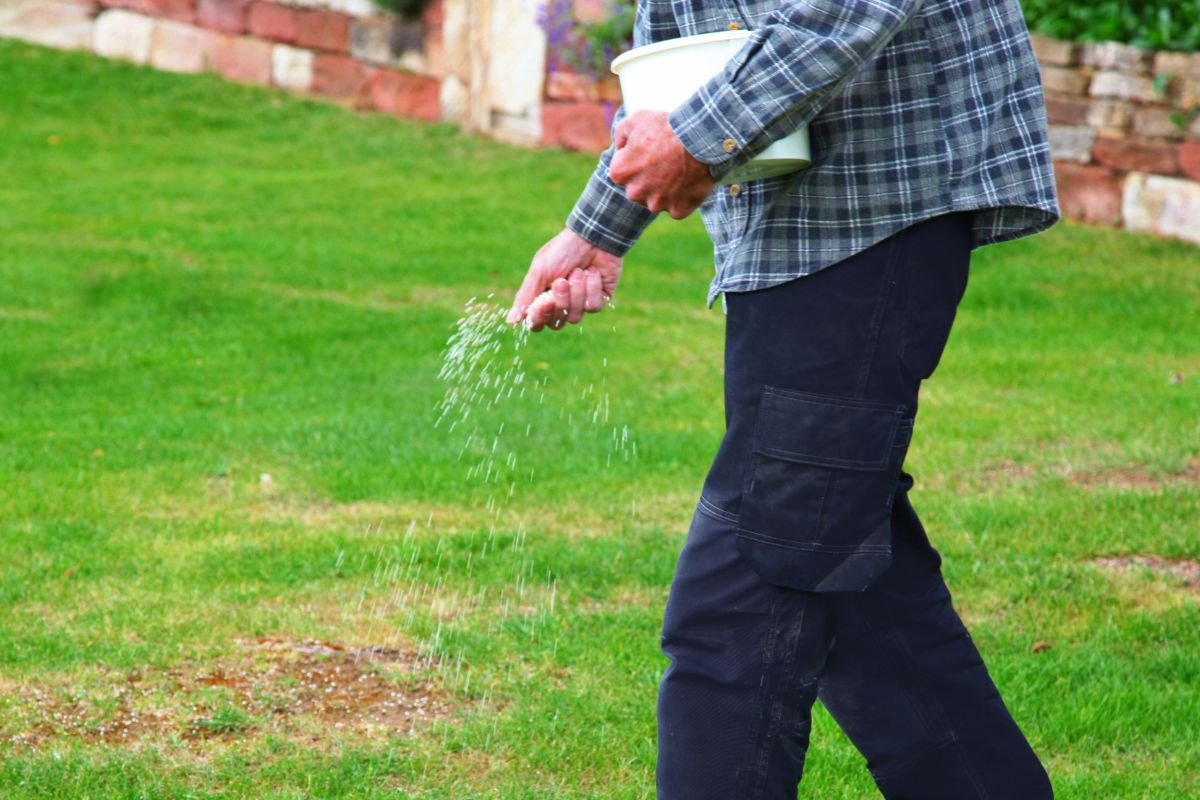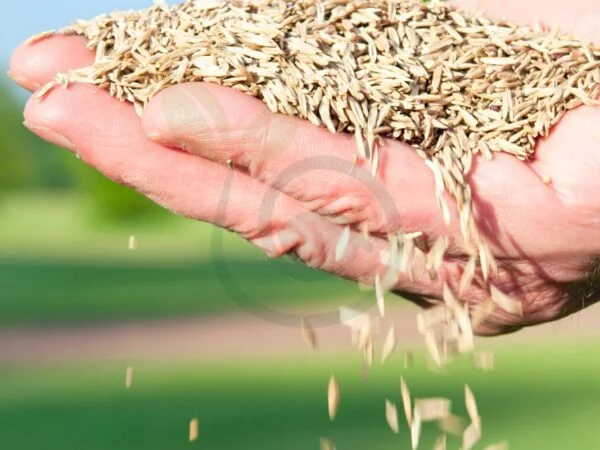Wondering if you can fertilize grass seed? Understanding the process and best practices can significantly impact your lawn's health. By knowing how to properly fertilize grass seed, you can promote strong root development and lush growth. Historically, the practice of fertilizing grass seed has evolved with advancements in agriculture and horticulture, leading to improved techniques for nurturing healthy lawns right from the start. Stay tuned as we delve into the dos and don'ts of fertilizing grass seed to help you achieve a vibrant and thriving lawn that will be the envy of your neighborhood.
Key Takeaways
- Fertilizing grass seed is crucial for healthy lawn growth.
- Select the right type of fertilizer based on your soil's needs and the grass type.
- Prepare the soil properly before seeding to ensure optimal nutrient absorption.
- Apply fertilizer to new grass following recommended guidelines for timing and frequency.
- Be cautious of over-fertilization, as it can harm the grass and the environment.
- Improving overall lawn health involves a combination of proper fertilization and other care practices.
Importance of Fertilization
Promoting Healthy Growth
Using high-quality fertilizer is crucial for promoting healthy grass growth. Ensure a balanced mix of nutrients to achieve lush greenery. Follow recommended application rates for the best results.
Enhancing Root Development
Choose fertilizers that support deep root development, which is essential for strong and resilient grass. Timing is key; apply fertilizers at the right time to enhance root growth effectively.
Improving Lawn Appearance
Select fertilizers that not only nourish but also enhance the overall look of your lawn. Improve color and thickness with suitable fertilizers, maintaining a consistent schedule for a visually appealing lawn.
Choosing Fertilizer Types
Starter vs Regular
Starter fertilizers are ideal for newly seeded areas, providing essential nutrients for seed germination. Regular fertilizers, on the other hand, cater to established lawns requiring maintenance. Select wisely based on your lawn's current stage.
Understanding NPK Ratios To maximize growth potential, grasp the importance of NPK ratios in fertilizers to meet the need. Adjust these ratios according to specific grass seed requirements for optimal results. Always ensure that the fertilizer's NPK ratio aligns with your lawn's unique needs.
Optimal Selection
When choosing a fertilizer, consider crucial factors such as grass type and soil condition to promote healthy growth. Opt for slow-release options for sustained nourishment over time. For eco-conscious individuals, organic fertilizers offer an environmentally friendly approach to lawn care.
Soil Preparation
Conducting Soil Test
Conduct a soil test to understand the specific nutrient requirements of your lawn. Utilize the results to identify deficiencies and select an appropriate fertilizer blend. Adjust application rates based on the recommendations to ensure optimal soil nutrition.
Lime Application
Understand how lime application contributes to balancing soil pH levels for healthy grass growth. Apply lime strategically to enhance nutrient absorption by grass roots, promoting lush and vibrant turf. Follow precise guidelines regarding timing and quantity for effective results.
Aeration Techniques
Implement core aeration as a crucial step in enhancing soil structure and promoting better nutrient uptake by grass roots. This technique helps alleviate soil compaction, allowing for improved air circulation and water absorption essential for robust lawn health. Schedule aeration during suitable seasons for maximum effectiveness.
Compost Topdressing
Enhance soil fertility and promote water retention by incorporating compost topdressing into your lawn care routine. The addition of organic matter through topdressing enriches the soil, providing essential nutrients for vigorous grass growth. Ensure even distribution of compost across the lawn for uniform nourishment.
Fertilizing New Grass
Best Practices
When fertilizing new grass, it's crucial to adhere to recommended practices for optimal lawn care. Avoid over-fertilization as it can harm the grass rather than benefit it. Incorporate fertilizing into your overall lawn maintenance routine for best results.
Even Distribution
To ensure healthy growth, focus on achieving even distribution of fertilizer throughout the entire lawn. Utilize spreaders or applicators to achieve consistent coverage across all areas. Be mindful of overlapping patterns to prevent creating patchy spots in your lawn.
Watering Techniques
Implement proper watering techniques alongside fertilization to maximize nutrient absorption by the grass seedlings. It's essential to water deeply but infrequently, encouraging robust root development and overall plant health. Adjust your watering schedules based on weather conditions and the specific needs of the grass species you are planting.
Timing and Frequency
Seasonal Guidelines
Summer Care
- Adjust fertilizing frequency and amounts in the summer to sustain grass health in hot weather.
- Use slow-release fertilizers to ensure continuous nutrient supply during the scorching summer months.
- Keep a close eye on your grass, observing its growth and appearance for any signs of stress.
Fall Techniques
- Opt for fertilizers with high potassium content to prepare your grass for the upcoming winter.
- Prioritize root development and nutrient storage as you approach the fall season.
- Modify your fertilizing routine according to the changing needs of your grass as temperatures drop.
Spring Tips
- Begin the growing season by applying a balanced fertilizer mix to kickstart healthy growth.
- Treat any winter-induced damage by targeting specific areas with appropriate fertilization in spring.
- Consider early spring fertilization as it can significantly boost vigorous growth in your lawn.
Avoiding Over-fertilization
Recognizing Signs
Grass may exhibit common signs of nutrient deficiencies, such as yellowing or browning of the blades. These symptoms indicate the need for fertilizer to enhance grass health. By closely observing any discoloration or slow growth, you can determine when to fertilize.
Regularly monitoring your grass allows you to detect issues early on. Whether it's patches of discolored grass or stunted growth, these indicators signal a lack of essential nutrients. Keeping a close eye on your lawn's appearance helps in timely fertilizer application.
Corrective Measures
To address nutrient imbalances in the soil, take necessary corrective actions like adjusting the types and amounts of fertilizer used. If you notice adverse effects on your grass after fertilization, consider changing the fertilizer type or reducing the application rate accordingly.
When faced with persistent issues despite adjustments made by yourself, seek advice from professionals specializing in lawn care. Their expertise can provide insights into complex nutrient deficiencies that require more advanced solutions beyond basic corrective measures.
Enhancing Overall Lawn Health
Essential Steps
Grass seed fertilization requires specific steps for optimal results. Prepare the soil adequately before seeding to promote healthy grass growth. Use a high-quality fertilizer suitable for the type of grass you are planting.
Prioritize even distribution of the fertilizer to avoid patchy growth in your lawn. Water the area thoroughly after fertilizing to help the seeds settle and initiate germination. Ensure proper sunlight exposure for healthy grass development.
Incorporate regular maintenance practices such as mowing at the correct height, aerating the soil, and controlling weeds. These practices contribute to long-term lawn health by promoting strong root development and overall resilience.
Long-term Care Strategies
Developing long-term care strategies is crucial for sustaining a lush and vibrant lawn. Consider seasonal variations when planning your fertilization schedule. Adjust your fertilizer application based on grass growth cycles during different times of the year.
Implement sustainable practices like using organic fertilizers or slow-release formulas to support ongoing grass seed fertilization without harming the environment. Monitor your lawn's health regularly and address any issues promptly to maintain its vitality.
Addressing Common Concerns
Fertilizer Before or After Seeding
Decide whether to fertilize before or after seeding based on grass requirements. Use starter fertilizers for new seedlings. Assess soil conditions and seedling growth to determine the timing of fertilization.
Importance of Starter Fertilizer
Recognize the significance of starter fertilizers in enhancing seedling growth. Supply vital nutrients for young grass to develop robust roots. Opt for starter fertilizers with well-balanced formulations for best outcomes.
Advanced Tips for Lush Lawns
Late Season Techniques
Adjust fertilizing techniques to cater to late-season grass care needs. Opt for fertilizers with reduced nitrogen levels to help the grass prepare for dormancy. Prioritize root development and nutrient storage before the onset of winter.
Incorporate deep watering in late fall, promoting healthy root growth and hardiness. Avoid high-nitrogen fertilizers that can stimulate top growth, making the grass vulnerable to frost damage. By focusing on root strengthening, you equip the grass to withstand harsh winter conditions effectively.
Early Spring Tips
Implement early spring fertilization practices to jumpstart grass growth after winter dormancy. Select fertilizers with elevated nitrogen content to promote lush greenery in the spring season. Factor in soil temperature and grass condition when scheduling early spring fertilization activities.
Consider conducting a soil test in early spring to determine specific nutrient deficiencies, guiding your fertilizer selection process effectively. Monitor weather forecasts closely before applying fertilizer in early spring, ensuring optimal conditions for nutrient uptake by the grass roots.
Closing Thoughts
You've learned the key steps to successfully fertilize grass seed, ensuring a healthy and lush lawn. By understanding the importance of fertilization, choosing the right type of fertilizer, preparing your soil, and following proper timing and frequency guidelines, you can set your new grass up for thriving growth. Remember to avoid over-fertilization, address common concerns promptly, and implement advanced tips for an even more vibrant lawn.
Now it's time to put your knowledge into action. Take the insights you've gained here and apply them to your lawn care routine. Your diligence in properly fertilizing your grass seed will not only lead to a beautiful lawn but also contribute to the overall health and sustainability of your outdoor space. Happy gardening!
Frequently Asked Questions
Can fertilizing grass seed improve germination rates?
Fertilizing grass seed can indeed enhance germination rates by providing essential nutrients for growth. Choose a high-quality fertilizer with balanced nutrients to support the young grass plants' development.
When is the best time to fertilize new grass seed?
It's recommended to fertilize new grass seed about 6-8 weeks after planting or when the grass has reached about 2 inches in height. This timing allows the young plants to establish their root systems before receiving additional nutrients.
How can I avoid over-fertilization when seeding my lawn?
To prevent over-fertilization, carefully follow the instructions on the fertilizer package regarding application rates. Using a slow-release fertilizer and watering your lawn properly after application can also help minimize the risk of nutrient overload.
What are some common concerns related to fertilizing grass seed?
Common concerns when fertilizing grass seed include burning the delicate young plants with excessive nitrogen, uneven distribution of fertilizer leading to patchy growth, and using inappropriate types of fertilizer that may harm rather than benefit your lawn.
Are there advanced tips for achieving a lush lawn through fertilization?
For an exceptionally lush lawn, consider soil testing to determine specific nutrient deficiencies, topdressing with compost for organic matter enrichment, applying micronutrients like iron for vibrant green color, and implementing a consistent fertilization schedule tailored to your lawn's needs.
Image Source: Paid image from CANVA



